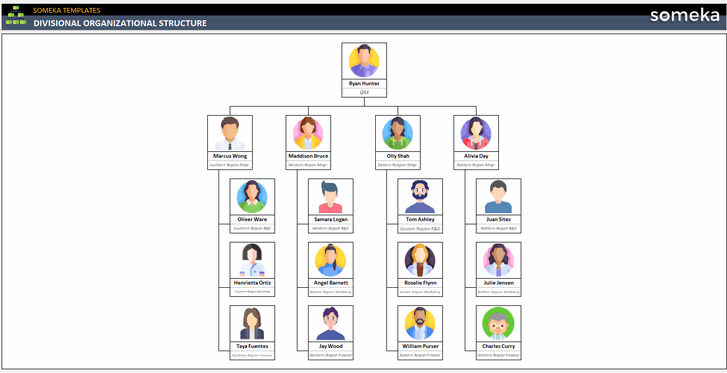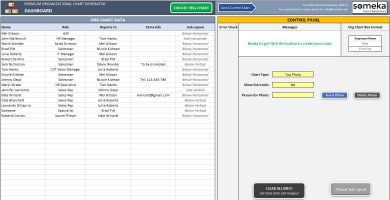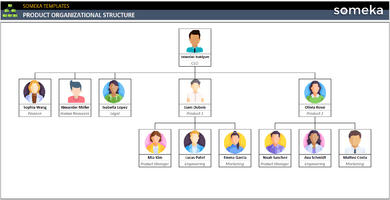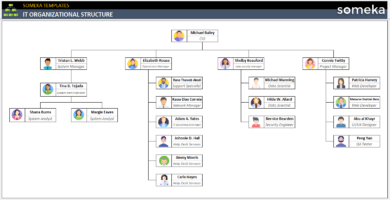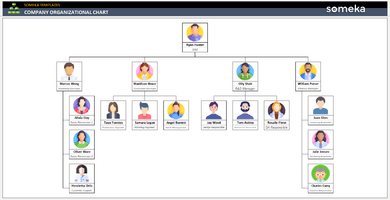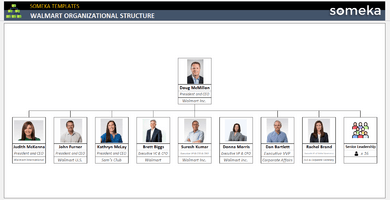The divisional organizational structure is one of the popular ways to distribute the power between employees and separate departments clearly. Especially, big companies choose the divisional organizational chart since they are too big to control by one person.
If you consider companies as countries, divisional organizational charts are federal countries. Departments are not too connected with each other and they have the freedom to do mostly what they want but eventually, all department manager, reports everything to the CEO.
The divisional organizational structure is a framework commonly adopted by companies to organize their operations based on product lines, geographic regions, or customer segments. In this structure, divisions operate as semi-autonomous units, having their own functional teams, resources, and decision-making authority. This allows for a greater focus on specific markets or products and facilitates better adaptation to unique customer needs.
A divisional organizational structure typically consists of divisions that are self-contained and have their own management, sales, marketing, finance, and other functional departments. Each division operates as a separate entity with its own goals, strategies, and profit centers. This structure promotes flexibility, quick decision-making, and accountability within each division.
Benefits of this structure:
- Market or Product Focus: Divisions are structured around specific markets, products, or customer segments, allowing for a dedicated focus on their unique requirements.
- Autonomy and Accountability: Divisions have a degree of autonomy in decision-making, enabling faster responses to market changes, customer demands, and competitive pressures.
- Enhanced Customer Satisfaction: The divisional structure enables organizations to tailor their products, services, and marketing efforts to specific customer needs, leading to higher customer satisfaction levels.
- Efficient Resource Allocation: Resources such as personnel, finances, and equipment are allocated to divisions based on their specific requirements, leading to optimal resource utilization.
- Streamlined Communication: Communication flows vertically within divisions, ensuring effective coordination and information sharing, while horizontal communication occurs across divisions to facilitate collaboration and knowledge transfer.
Here, you can find the one of most popular versions of the divisional organizational chart. If you already have an org chart, you can compare and find the difference between yours and the new divisional organizational structure template created by Someka. You will most probably find several differences and you can apply these differences to your org chart.
Let’s say you have an ambition to grow bigger but you are curious about how you can manage everything. A divisional organizational chart helps you to create a freer environment among employees.
Lastly, you can find 2 different files: PDF and Microsoft Excel.
